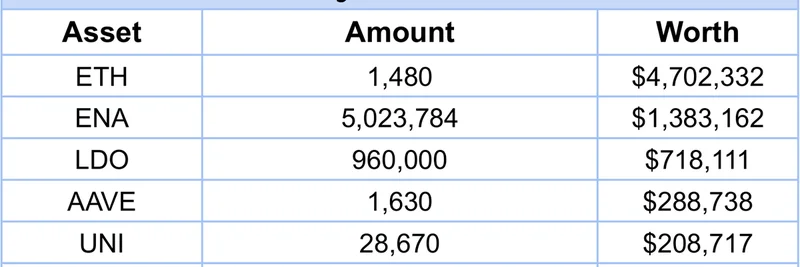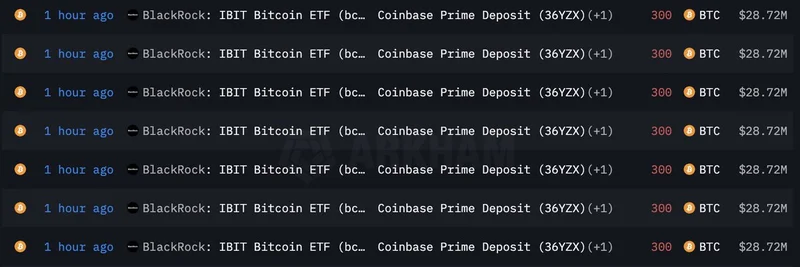If you're tuned into the crypto world, you've probably heard of Arthur Hayes. As the co-founder and former CEO of BitMEX, one of the biggest crypto derivatives exchanges, Hayes is a big name in the industry. He's known for his bold market predictions and deep dives into macroeconomics. Recently, onchain data spotted some major moves from his wallet, sparking discussions across the community.
According to a post from Onchain Lens on X (original tweet), Hayes has been offloading a bunch of tokens. Specifically, he sent 320,000 LDO tokens—worth about $239,000—to Wintermute, a prominent market maker in the crypto space. But that's just the tip of the iceberg. Over the past two days, he's sold a whopping $7.4 million worth of various tokens, including ETH, ENA, LDO, AAVE, UNI, and ETHFI.
Let's break this down. LDO is the governance token for Lido DAO, a popular liquid staking protocol on Ethereum. ENA comes from Ethena, which offers a synthetic dollar called USDe. AAVE and UNI are staples in DeFi—AAVE for lending and borrowing, UNI for Uniswap's decentralized exchange. ETHFI is from Ether.fi, another staking project, and ETH is, well, Ethereum itself.
The transactions were tracked on the Ethereum blockchain, with Hayes' address being 0x6cd66dbdfe289ab83d7311b668ada83a12447e21. Onchain Lens provided a handy summary table of the sales:
From the data, Hayes dumped about 1,480 ETH ($4.7M), over 5 million ENA ($1.38M), 960,000 LDO ($718K), and smaller amounts of the others, totaling around $7.425 million.
Why Is This a Big Deal?
In crypto, when whales like Hayes make big sells, it can signal shifts in market sentiment. Wintermute and Cumberland (another entity in the transactions) are major liquidity providers, so these could be OTC (over-the-counter) deals to avoid slamming the market prices. But why now? Hayes has been vocal about his views on the economy, often tying crypto trends to global events like interest rates and inflation.
For meme token enthusiasts, this might not seem directly related at first glance—these are mostly DeFi blue-chips, not your typical dog or cat coins. However, DeFi tokens often serve as the backbone for meme trading. Platforms like Uniswap (UNI) are where many memes launch, and staking protocols like Lido influence ETH's liquidity, which backs a lot of meme activity on Ethereum.
If Hayes is lightening his DeFi positions, it could hint at caution in the broader market. Meme tokens, being highly volatile, often amplify movements in majors like ETH. A sell-off in ETH could trickle down, causing dips in meme prices. On the flip side, if he's rotating into other assets—maybe even memes or newer narratives—this could be a strategic pivot.
Community Reactions and Speculations
The tweet garnered quick reactions. Some users joked about "selling the bottom," while others saw it as a sign of upcoming market choppiness, especially for lending protocols like AAVE. One reply noted, "Whale offloads hint at choppy waters ahead for lending protocols." It's classic crypto—big moves spark FUD (fear, uncertainty, doubt) or FOMO (fear of missing out).
Hayes himself hasn't commented yet, but given his history, he might drop a blog post on his site explaining the rationale. He's famous for essays like "Fiat is Dead" or predictions on Bitcoin's future.
What Should Meme Traders Do?
As a meme insider, keep an eye on whale wallets. Tools like Onchain Lens make it easier to track these moves in real-time. If you're holding ETH-based memes, consider the potential for short-term volatility. Diversify into Solana memes or other chains if Ethereum feels shaky.
Remember, this isn't financial advice—just observations from the blockchain. Crypto is unpredictable, and even pros like Hayes can surprise us.
Stay tuned for more updates on whale activities and how they intersect with the wild world of meme tokens. If you spot something interesting, share it in the comments!


